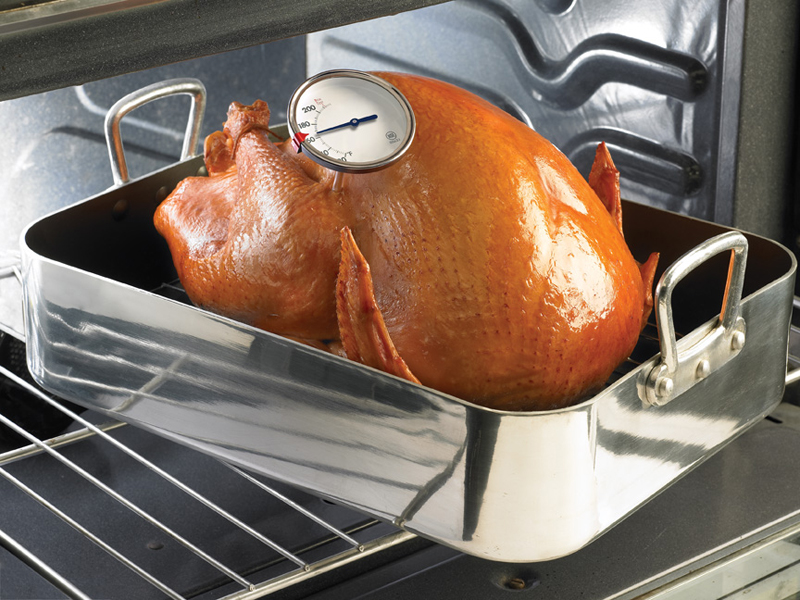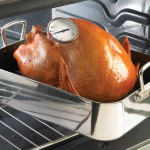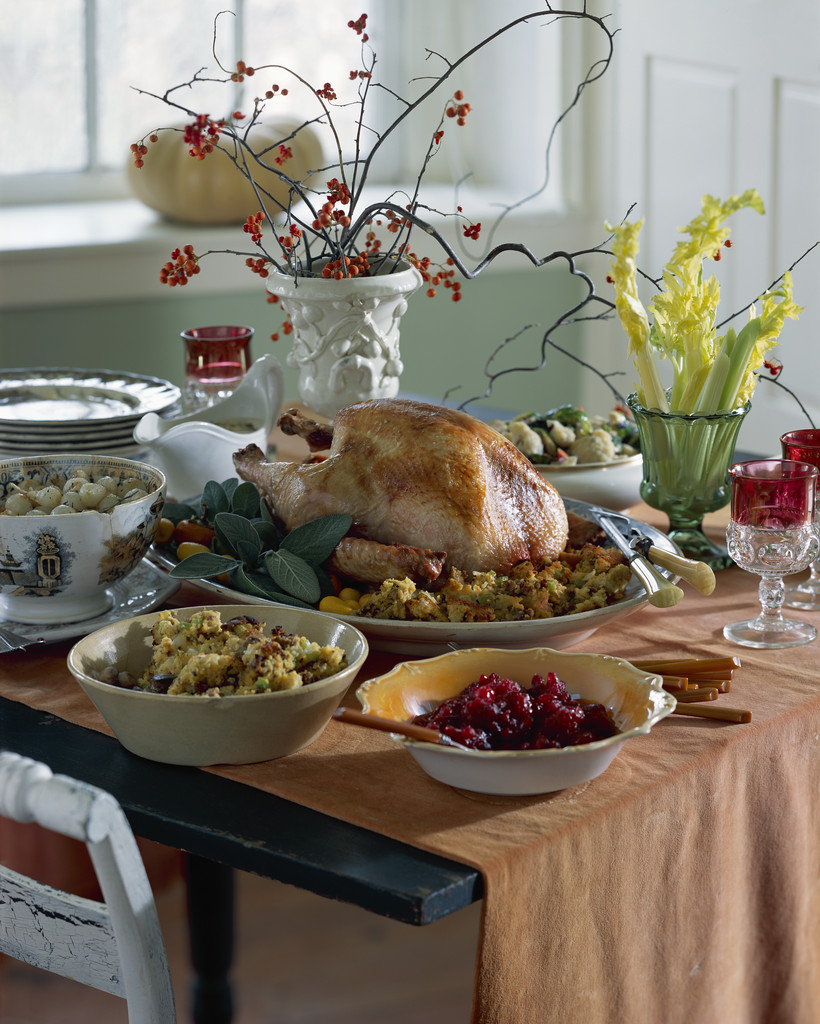by Dorothy C. Lee | Nov 25, 2016
 During the holiday season nothing carries good cheer and holiday spirit across the miles like receiving a package full of homemade treats.
During the holiday season nothing carries good cheer and holiday spirit across the miles like receiving a package full of homemade treats.
If you go to the effort of preparing food gifts, you want to be sure the contents arrive in the condition they were sent in. The first step is to pack it right.
- Select a strong sturdy cardboard, plastic, or metal container. Round oatmeal boxes or coffee cans with re-closable lids work well.
- On the bottom of the container place a generous layer of filler, such as crumped tissue paper, waxed paper, brown paper bags or plastic bubble wrap.
- Next, wrap baked goods individually or in pairs placed back to back. Begin with the sturdiest first. Moist, firm baked goods ship better than the brittle kind. Brownies, fudge and moist cookies pack well. Top with another layer of filler and repeat ending with a thick layer of filler.
- Fill the container full so the contents can’t shift when it is shaken.
- Be sure to pack several inches of cushioning material in the bottom of the shipping carton and enough material around, over and between items so that the contents cannot move easily. Brown paper bags and newspaper provide adequate cushioning for most packages. Save Styrofoam peanuts or foam packing pieces in packages for use when cushioning your packages.
- Place a card with the address of the sender and the receiver inside the carton, just in case.
- Wrap the carton in heavy brown paper, if desired, and seal it securely with transparent packing tape. Clearly label the carton; put the transparent tape over the address to keep it from getting wet and smeared. Mark it “perishable” to encourage careful handling. One of the best ideas yet is to give a gift within a gift that serves as its own alternative wrapping. Great tasting recipes become even more special when attractively packaged for giving.
- Embellish small metal coffee tins for packaging tiny truffles or other candies. Replace plastic tops to seal.
- Consider using an empty potato chip canister for packaging. Cover it with Christmas wrapping paper, fill it with cookies, candies or salty snacks, and replace its plastic top to seal.
- Fill a Christmas stocking with a favorite snack mix or nut mix. Package the mix in a re-sealable plastic bag and tuck it and holiday napkins into the stocking.
- Top off decorative jars of homemade desert sauces or jelly with raffia or decorative ribbon. Attach a homemade gift tag and a spoon.
- Bake and transport homemade bread in light weight recyclable aluminum pans available at most supermarkets. Wrap pans of bread with a large linen napkin or place bread in gift bags and tie with holiday ribbon.
- When giving a variety of foods together, include items to be eaten with your goodies or utensils that might be needed for further preparation.
Remember it’s the thought behind the holiday package that counts; the link with loved ones and the knowledge that someone is thinking of you during the holiday season. A package filled with homemade treats says “love” with every bite.

by Dorothy C. Lee | Jan 4, 2016

A Win-Win Super Bowl Party
Get defensive about your health. These easy-to-tackle recipes are just as tasty, but lower in fat and calories than typical game-day fare. It’s a Win-Win situation.
Skip the six-foot-long sub sandwich usually drenched in mayonnaise. Instead, serve a soup and sandwich smorgasbord with a variety of low-fat cheeses, whole grain breads, fresh, low-sodium cold cuts, and lots and lots of fresh vegetables. Serve soups that are hearty and full of vegetables or grains.
Swap calorie-laden soft drinks with 100% fruit juice or vegetable juice. Prepare mock cocktails using half juice and half seltzer water for a healthy, refreshing beverage.
Set up a make-your-own sundae bar. Use low-fat, protein-rich Greek yogurt and add low-fat granola and fresh or frozen fruit like strawberries, blueberries, even dried fruit. Top off yogurt sundaes with nuts.
Replace chips with vegetable sticks or fruit, or try making your own tasty pita chips. Recipe follows and it only takes a few minutes. Serve a store-bought salsa or a homemade bean dip (see recipe) with carrots, celery, red pepper strips, and cucumbers instead of high-fat dips and salty chips.
If you are going to serve dessert, opt for fruit—fresh, frozen, or canned in its own juice, or there are sugar-free options.
These game day decisions will help you develop a winning game plan!
Garlic & Herb Pita Chips
4-6 whole wheat pitas
2 tablespoons olive oil
1 teaspoon Italian seasoning
½ teaspoon garlic powder
¼ teaspoon salt
Coat 2 large baking sheets with non-stick cooking spray.
Cut pitas into 8 wedges each and separate each wedge at the fold.
Place the pita wedges in an even layer on the baking sheets.
Brush wedges with oil and sprinkle with Italian seasoning, garlic powder, and salt.
Bake at 350°F for 6 to 10 minutes or until golden brown.
May be baked ahead of time and stored in an airtight container for up to 4 days.
Pinto Bean Salsa Dip
1 (approximately 15-ounce) can pinto beans, drained and rinsed, or
1½ cups cooked dried beans
1 cup shredded cheese
½ to 1 cup chunky salsa
1 to 2 tablespoons chopped onion (optional)
¼ to ½ teaspoon chili powder or to taste (optional)
Mash beans with a fork. Mix in cheese. Stir in enough salsa until mixture is desired consistency for dipping. Add onion and seasoning as desired. Serve cold or cook, stirring, over medium heat until the cheese melts and the mixture is well-blended and hot (about 5 minutes).
For further information contact:
Dorothy C. Lee, C.F.C.S.
UF IFAS Extension Escambia County
3740 Stefani Road
Cantonment, FL 32533-7792
(850) 475-5230
dclee@ufl.edu

by Judy Corbus | Nov 27, 2015
 Have questions about safely preparing your holiday meal? Refer to this quick reference for answers to common questions this time of year:
Have questions about safely preparing your holiday meal? Refer to this quick reference for answers to common questions this time of year:
Q. Approximately how long should you allow for thawing a frozen turkey in the refrigerator?
A. 24 hours per each 4 – 5 pounds of turkey. In it’s original wrapper, place the frozen bird in the refrigerator (40˚F or below). To prevent cross contamination, be sure to place the turkey in a container. A thawed turkey can remain in the refrigerator for 1 – 2 days.
Q. How long should I cook the turkey?
A.
COOKING TIME – UNSTUFFED
Size of Turkey Estimated Time to Reach 165˚F
8 – 12 pounds 2 ¾ – 3 hours
12 – 14 pounds 3 – 3¾ hours
14 – 18 pounds 3 ¾ – 4 ¼ hours
18 – 20 pounds 4 ¼ – 4 ½ hours
20 – 24 pounds 4 ½ – 5 hours
COOKING TIME – STUFFED
Size of Turkey Estimated Time to Reach 165˚F
8 – 12 pounds 3 – 3 ½ hours
12 – 14 pounds 3 ½ – 4 hours
14 – 18 pounds 4 – 4 ¼ hours
18 – 20 pounds 4¼ – 4 ¾ hours
20 – 24 pounds 4 ¾ – 5 ¼ hours
Q. What is a safe internal temperature for cooking a whole turkey?
A. 165˚F. Use a food thermometer to check the internal temperature of the turkey. Insert the thermometer in the innermost part of the thigh and wing and the thickest part of the breast, making sure not to touch the bone. All turkey meat, including any that remains pink, is safe to eat as soon as all parts reach at least 165˚F. Let the turkey stand 20 minutes after removing from the oven. Remove any stuffing and carve the turkey.
Q. What is the recommended temperature for stuffing?
A. 165˚F. The stuffing should reach 165˚F whether cooked inside the bird or in a separate dish.
Q. I want to stuff the turkey. How do I do this safely?
A.
1. Cook any raw meat, poultry, or shellfish you plan to use before stuffing the turkey. Do not mix wet and dry ingredients until just before stuffing the turkey cavity; wet ingredients can be prepared ahead of time and refrigerated.
2. Spoon stuffing directly into the cavity right after preparation. Stuff loosely – plan for ¾ cup of stuffing per pound. The stuffing should be moist, not dry – bacteria is destroyed more quickly by heat in a moist environment. Do NOT stuff turkeys to be grilled, smoked, fried, or microwaved.
3. Cook the turkey immediately in an oven no lower than 325˚F.
4. Use a food thermometer to make sure the temperature of the turkey AND the center of the stuffing have reached a safe minimum internal temperature of 165˚F.
5. Let the cooked turkey rest for 20 minutes before removing the stuffing and carving.
Q. How long can I keep leftovers?
A. Refrigerate all leftovers within two hours after cooking. Divide cooked foods into shallow containers; this allows the center of the food to cool more quickly and evenly. Use within 3-4 days or freeze for longer storage. Be sure to reheat hot foods to at least 165˚F; sauces, soups, and gravies should be heated to a rolling boil.
For more information about holiday foods and food safety (in English and Spanish), call: USDA Meat and Poultry Hotline, 1-888-MPHotline (1-888-674-6854) www.fsis.usda.gov
Source: Avoid Guessing About Holiday Food Safety, University of Nebraska-Lincoln Extension.
by Shelley Swenson | Dec 18, 2013

Image by © Royalty-Free/Corbis
The countdown is upon us. The last-minute food preparation is soon to begin. Don’t regret the holidays by overdoing in the food consumption aspect of meals. Avoid having to include a strict eating regimen as a new year’s resolution by making some changes in the way you prepare your food. There are ways to cut back during food preparation to spare calories without changing the taste. Consider these suggestions:
- Turkey: Haven’t bought yours yet? Choose a plain bird over a self-basting bird to lower the sodium content. To ensure a moist bird, leave the skin on while roasting, don’t over-bake the bird, and pour gravy on the meat after carving. This isn’t a calorie savings but we have to concern ourselves with sodium intake every day. Consider the latest recommendation from the 2010 Dietary Guidelines for Americans. It is suggested that we reduce our daily sodium intake to less than 2,300 milligrams (mg) and further reduce intake to 1,500 mg among persons who are 51 and older and those of any age who are African-American or have hypertension, diabetes, or chronic kidney disease. The 1,500 mg recommendation applies to about half of the U.S. population, including children and the majority of adults. (Source: Dietary Guidelines for Americans 2010, USDA, www.dietaryguidelines.gov)
- Gravy: Use a fat-skimmer cup or freeze the juices in a shallow pan so you can remove the fat. You will save around 56 grams of fat per cup!
- Dressing: Use a low-sodium boxed stuffing mix and add sautéed onion, celery, apples, and cooked rice. Add a little more broth and bake. Dressing is my favorite part of the meal so I fill my plate with low-calorie vegetables and fruits before the dressing is passed to me to keep my calories under control.
- Candied yams: Sweeten with apple or orange juice and add ground cinnamon. Realize yams have flavor all by themselves. Wean yourself off the butter and marshmallows and enjoy their wholesome taste.
- Green bean casserole: Green bean casserole is a favorite for many people over the decades. Cook fresh green bean with chunks of potatoes and fat-free half-and-half instead of cream soup. Top with almonds and leave the fried onion rings in the cupboard.
- Mashed potatoes: Use skim milk, garlic powder, and a little Parmesan cheese instead of whole milk and butter. Serve low-calorie margarine instead of butter.
- Pumpkin Dessert: Consider serving the pumpkin custard without a pie shell. Individual baking dishes adorned with a small dollop of whipped cream can save calories without sacrificing the taste of a holiday meal favorite.
Ever wondered about the fat content of different meats and poultry that are traditionally consumed over the holidays? USDA offers this summary:
Normal
0
false
false
false
EN-US
X-NONE
X-NONE
/* Style Definitions */
table.MsoNormalTable
{mso-style-name:”Table Normal”;
mso-tstyle-rowband-size:0;
mso-tstyle-colband-size:0;
mso-style-noshow:yes;
mso-style-priority:99;
mso-style-parent:””;
mso-padding-alt:0in 5.4pt 0in 5.4pt;
mso-para-margin-top:0in;
mso-para-margin-right:0in;
mso-para-margin-bottom:8.0pt;
mso-para-margin-left:0in;
line-height:107%;
mso-pagination:widow-orphan;
font-size:11.0pt;
font-family:”Calibri”,”sans-serif”;
mso-ascii-font-family:Calibri;
mso-ascii-theme-font:minor-latin;
mso-hansi-font-family:Calibri;
mso-hansi-theme-font:minor-latin;}
Fat Facts
For a 3.5 ounce serving Grams of Fat
Roast Beef 15.0
Turkey Wing with Skin 12.3
Dark Turkey Meat with Skin 11.5
Roasted Ham 9.0
Turkey Breast with Skin 7.3
Dark Meat without Skin 7.0
Turkey Breast without Skin 0.7
|
Holiday meals don’t have to pack such a high-calorie punch. Simple makeover tips can lighten a meal and keep the taste good!
 During the holiday season nothing carries good cheer and holiday spirit across the miles like receiving a package full of homemade treats.
During the holiday season nothing carries good cheer and holiday spirit across the miles like receiving a package full of homemade treats.



